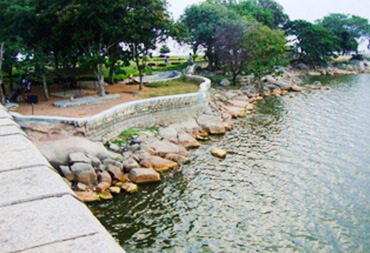



The Forgotten Gem of Hyderabad
Problem: Falaknuma Palace, one of the most magnificent architectural gems in Hyderabad, spent years hidden from the public eye, overshadowed by modern developments and neglected over time. Built in the late 19th century, this palace was once the seat of the Nizam, the ruler of Hyderabad. Despite its opulent past, Falaknuma Palace faced a period of obscurity and deterioration in the latter half of the 20th century.
The grandeur of Falaknuma Palace Hyderabad began to fade, and for decades, it remained closed to the public, neglected and forgotten. While Hyderabad saw rapid growth with the IT boom, many locals didn’t even know that such a historical landmark existed within the city.
Could such an architectural marvel be restored to its former glory? Could this palace, once a royal residence, find a new purpose in modern Hyderabad?
Agitation: The Call to Restore History
Agitate: For years, the majestic Falaknuma Palace Hyderabad remained an untapped treasure. Although it stood as a symbol of Hyderabad’s royal history, there was little public interest or awareness of its existence. The palace, originally designed to offer a panoramic view of Hyderabad (“Falaknuma” means “Mirror of the Sky”), was no longer a place of grandeur but rather a deteriorating structure.
The palace faced several challenges, from structural degradation to lack of resources for proper maintenance. Its gardens were overgrown, and its lavish interiors, once adorned with rare artifacts and furniture, started showing signs of decay.
People began asking important questions. Could such a treasure be left in ruins? Could Hyderabad allow a critical piece of its history to disappear without any effort to revive it? The public began pushing for the restoration of Falaknuma Palace Hyderabad as a heritage site, drawing attention from historians, architects, and tourism enthusiasts.
Solution: The Transformation of Falaknuma Palace
Solution: In the early 2000s, the restoration of Falaknuma Palace Hyderabad was taken up by the Taj Group of Hotels, in collaboration with the Nizam’s family. This project aimed not only to preserve the palace’s historical significance but also to transform it into one of India’s most luxurious heritage hotels.
Here’s how the transformation of Falaknuma Palace unfolded:
1. The Restoration Process
The restoration process of Falaknuma Palace Hyderabad was both meticulous and respectful of its royal legacy. The Taj Group worked closely with historians and conservationists to ensure that every aspect of the palace’s architecture and interiors was preserved.
Structural Restoration: Skilled craftsmen were brought in to restore the palace’s facade, which had suffered wear and tear over the years. The palace’s distinctive design, influenced by European, Mughal, and Rajasthani styles, was carefully refurbished. The large Venetian chandeliers, marble staircases, and intricate frescoes were cleaned and restored to their original glory.
Interior Refurbishment: The interiors, including the grand dining hall (which seats 101 guests and is believed to be the longest dining table in the world), were restored using original furniture and fittings. Every detail, from the crystal chandeliers to the rare manuscripts in the palace library, was carefully conserved.
Modern Additions: While keeping the heritage intact, the restoration also included modern amenities. The palace was transformed into a luxury hotel, but every effort was made to blend modern comforts with the old-world charm. Guests could enjoy the palace’s rich history while also benefiting from modern conveniences.
2. Opening to the Public
After years of meticulous restoration, Falaknuma Palace Hyderabad was opened to the public in 2010 as a luxury hotel. The Taj Falaknuma Palace, as it is now called, offers an experience that blends history with hospitality. The palace, which was once accessible only to royalty and dignitaries, is now open to visitors from around the world.
The transformation of Falaknuma Palace Hyderabad into a heritage hotel not only preserved its historical significance but also boosted tourism in Hyderabad. Today, the palace attracts history enthusiasts, architecture buffs, and tourists who wish to experience the grandeur of the Nizam’s era.
3. Cultural and Historical Significance
One of the key goals of restoring Falaknuma Palace Hyderabad was to highlight its cultural and historical importance. The palace, built by Nawab Vikar-ul-Umra, was later purchased by the Nizam of Hyderabad. It served as the residence of the Nizam and hosted several prominent personalities, including King George V and Queen Mary of Britain, as well as the last Tsar of Russia, Nicholas II.
The architecture of Falaknuma Palace Hyderabad is a blend of different styles, with European Renaissance, Roman, and Mughal influences. The palace’s library houses rare manuscripts, and its museum-like interiors feature collections of jade, marble, and crystal from around the world.
Case Study: Falaknuma Palace Hyderabad’s Economic and Social Impact
The transformation of Falaknuma Palace Hyderabad into a luxury hotel has had a significant economic and social impact on the city.
Boost to Tourism
Since its reopening as a heritage hotel, Falaknuma Palace Hyderabad has become one of the top tourist attractions in the city. The palace offers guided tours to non-resident visitors, giving them a glimpse into the luxurious life of the Nizams. These tours are incredibly popular among tourists, with many visitors coming to Hyderabad specifically to see the palace.
The increased footfall to the palace has led to a surge in tourism-related businesses around the area. Hotels, restaurants, and local handicraft shops have benefited from the growing number of visitors to the palace. Falaknuma Palace Hyderabad has positioned itself as a symbol of Hyderabad’s rich cultural heritage and plays a pivotal role in promoting the city’s tourism industry.
Economic Activity
In addition to boosting tourism, the palace has contributed to the local economy through job creation. The palace employs a large number of staff, including hospitality professionals, tour guides, and conservation experts. The palace also collaborates with local craftsmen to maintain the traditional decor and heritage elements of the hotel, providing them with opportunities to showcase their skills.
Moreover, Falaknuma Palace Hyderabad has become a popular venue for high-profile weddings and corporate events, contributing to Hyderabad’s reputation as a destination for luxury experiences. These events bring in significant revenue for the hotel and for the city.
Preserving Heritage
The restoration of Falaknuma Palace Hyderabad also had a profound social impact. It has not only preserved a critical piece of Hyderabad’s history but has also inspired other restoration projects in the city. The success of Falaknuma’s restoration has raised awareness about the importance of protecting Hyderabad’s architectural and cultural heritage.
Many conservationists now use the palace as a case study to demonstrate how neglected historical structures can be revitalized and repurposed. The palace has shown that heritage buildings can be commercially viable while still maintaining their historical integrity.
Conclusion: A New Era for Falaknuma Palace Hyderabad
The restoration and transformation of Falaknuma Palace Hyderabad is a testament to the power of preservation and innovation. What was once a neglected royal residence is now a thriving luxury hotel that continues to captivate visitors from around the world. The palace has successfully blended its rich history with modern hospitality, offering guests a chance to experience the grandeur of the past while enjoying contemporary comforts.
This restoration project is a powerful example of how historical landmarks can be saved from decay and given new life. Falaknuma Palace Hyderabad has not only boosted the local economy and tourism but has also become a symbol of pride for Hyderabadis.
In a city that’s rapidly modernizing, Falaknuma Palace Hyderabad serves as a reminder of Hyderabad’s royal past and cultural richness. It stands tall, not just as a monument of history but as a beacon of the possibilities that arise when we invest in preserving our heritage.
Durgam Cheruvu


